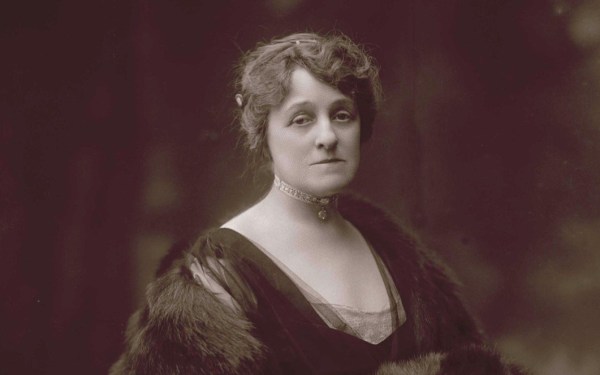Why You Should Read Ann Radcliffe: Her Best Novels

Disclaimer
This post may contain affiliate links. I will make a small commission if you make a purchase through one of these links, at no extra cost to you. See full disclosure and disclaimer policy HERE.
If you’ve never heard of Ann Radcliffe, you’re seriously missing out on one of literature’s most intriguing pioneers. Ever picked up a Gothic novel filled with dark castles, eerie landscapes, and mysterious happenings? You can thank Radcliffe for that. She didn’t just dabble in Gothic fiction—she practically defined the genre. But don’t worry, this isn’t some boring lecture on dusty old books. Let’s dive into why you should absolutely be reading Ann Radcliffe today.
Table of Contents
- Who Was Ann Radcliffe, Anyway?
- She Invented the ‘Psychological Thriller’ Before It Was Cool
- Gothic Fiction? She Wrote the Blueprint
- She Gave Women a Voice in a Man’s World
- Most Notable Novels
- She’s Not Just Old—She’s Timeless
- Conclusion
- FAQs
Who Was Ann Radcliffe, Anyway?
Think of her as the Beyoncé of 18th-century Gothic fiction. Ann Radcliffe was born in 1764 and became one of the most successful and influential writers of her time. Her books were bestsellers way before social media or Amazon reviews existed. But what made her such a big deal?
Well, she wrote novels that mixed romance, horror, and mystery into something hauntingly beautiful. Her most famous works like The Mysteries of Udolpho and The Italian gave readers an escape into wild, dramatic landscapes filled with secrets, suspense, and just the right touch of supernatural flair.
She Invented the ‘Psychological Thriller’ Before It Was Cool
Before Netflix binge-watching was a thing, people were glued to Radcliffe’s novels. Why? Because she knew how to mess with your head. Her characters often found themselves caught between reality and imagination—constantly questioning what’s real and what’s not.
It’s like reading a dream where every shadow might be a ghost, or it might just be the wind playing tricks. You feel it, don’t you? That tension, that suspense, that delicious discomfort? Yeah, she nailed that.
Gothic Fiction? She Wrote the Blueprint
If you’re into dark romance, haunted mansions, secret passageways, and women who are way stronger than society thinks—Radcliffe’s your girl. She created the kind of atmosphere that wraps around you like fog. Her writing style is vivid and cinematic. You can smell the old stone walls, hear the creaky doors, and feel the chill of something lurking just out of sight.
Modern authors like Stephen King and Daphne du Maurier owe a huge debt to her style. Even Jane Austen playfully poked fun at Radcliffe’s popularity in Northanger Abbey—but deep down, you know Jane was a fan.
She Gave Women a Voice in a Man’s World
Let’s be real: the 18th century wasn’t exactly feminist-friendly. Yet, Radcliffe’s heroines were bold, curious, and intelligent—breaking away from the typical damsel-in-distress trope. Her stories gave women agency, showed them struggling with fear, but ultimately overcoming it. And that, back then, was revolutionary.
She also proved that a woman could be both commercially successful and critically acclaimed, which inspired a whole generation of female writers. If you’re a fan of women paving the way in literature, Ann Radcliffe deserves a standing ovation.
Most Notable Novels
Here are Ann Radcliffe’s most notable novels, the ones that made her a literary legend:
1. The Mysteries of Udolpho (1794)
This is the quintessential Gothic novel. It follows Emily St. Aubert, a young woman who faces grief, mystery, and danger in a crumbling Italian castle. Packed with suspense, dramatic scenery, and a villain you’ll love to hate, this book cemented Radcliffe’s place in literary history. It’s her most famous work—and for good reason.
2. The Italian (1797)
Dark, political, and deeply psychological, The Italian tells the story of a forbidden romance haunted by religious hypocrisy and sinister secrets. With the terrifying character of the monk Schedoni, Radcliffe amps up the tension in a way that still holds up today.
3. A Sicilian Romance (1790)
This earlier novel explores the mysterious history of a noble Sicilian family. Think hidden chambers, mistaken deaths, and long-lost relatives. It’s lighter than Udolpho but still drenched in Gothic atmosphere.
4. The Romance of the Forest (1791)
A huge commercial success in its day, this novel blends emotional depth with mystery. It follows a young woman hiding out in an abandoned abbey with a family running from the law. Sound juicy? It is.
5. Gaston de Blondeville (Published posthumously in 1826)
More supernatural than her other works, this novel ventures into ghost story territory. It wasn’t released during her lifetime, but it shows how Radcliffe was experimenting with darker, more fantastical elements.
She’s Not Just Old—She’s Timeless
Sure, her books are a couple of centuries old. But guess what? The themes are still totally relevant. Fear of the unknown, the search for identity, moral conflict, the dangers of unchecked power—sound familiar? These ideas hit just as hard today as they did in 1794.
And her writing? Surprisingly fresh. Once you get past the formal language (hey, it was the 18th century), you’ll be hooked. Her sentences are like winding staircases—you never know where they’ll lead, but you’re eager to climb.
RELATED:
Exploring The Fascinating World Of Gothic Literature Books
Conclusion
Ann Radcliffe is the kind of author you didn’t know you needed. Her books are spooky, smart, and strangely satisfying. They’re perfect for anyone who loves mystery, drama, and a touch of the otherworldly. She set the stage for countless authors and created a literary legacy that still gives us chills.
So next time you’re in the mood for a moody read that keeps you turning pages long after midnight, pick up one of her novels. You’ll not only enjoy the ride—you’ll be reading a piece of history.
FAQs
Did you like it? Pin this post for later!
















